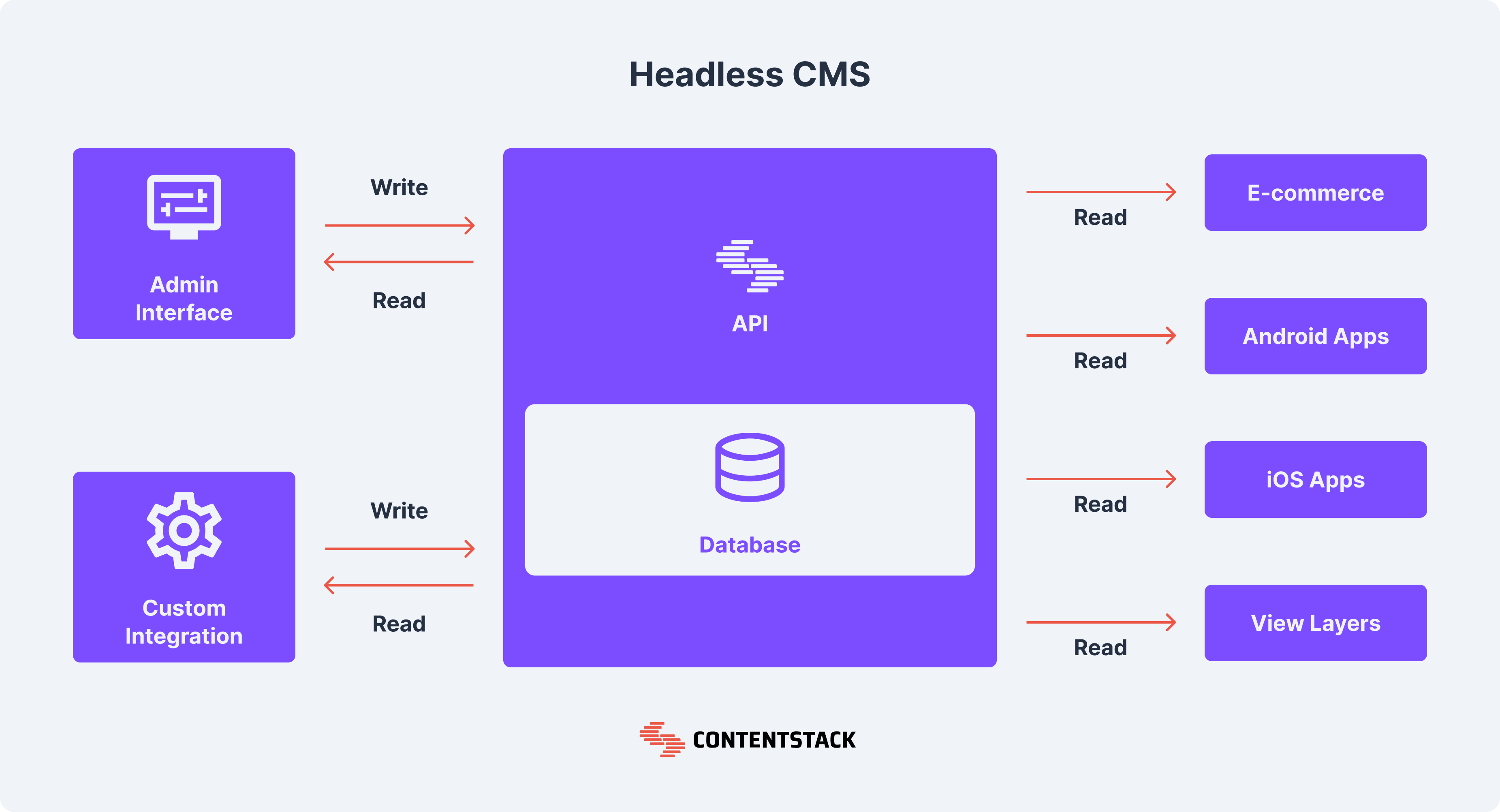A definitive guide to headless CMS for voice content management

With 62% of adult Americans using voice assistants, a headless CMS offers a flexible, scalable and secure way to manage voice content. Discover how headless CMS delivers superior voice content management. Optimize your digital presence and stay ahead of the competition. Request a demo to see how it works.
Highlights
You’ll learn how to enhance voice content management with headless CMS.
- Flexibility in development: Headless CMS allows the use of any programming language, fostering innovative voice content solutions.
- Scalability across digital channels: It manages and scales voice content on various platforms, adapting to the growing demand for voice technology.
- Real-time content updates: Keeps your voice platforms abreast with the most current information.
- Optimized voice interactions: a headless CMS Tailors content for voice commands, enhancing user engagement.
- Streamlined voice search optimization: Enhances SEO for voice searches through accessible and well-structured content modules.
Experience the difference a headless CMS can make to your digital strategy. Try a headless CMS demo today and transform your digital presence!
Keep reading to learn more!
An NPR and Edison Research report states that 62% of adult Americans use a voice assistant on their device. As more people adopt voice assistants and related technologies, voice content management is becoming essential for enterprises.
However, a traditional CMS platform cannot manage voice content. Traditional CMSes were once the standard for web development. However, as business content needs became more complex, they have struggled to keep up.
Hence, headless CMSes have stepped in to bridge the gap, as they do not have these restrictions. So, what is a headless content management system, and how does it support voice content management?
Understanding headless content management systems
A headless CMS is a CMS that separates the back end (body) from the front end (head). It is built as a content hub that allows you to manage content in one place. In a traditional CMS, those components are one and locked in silos, making it difficult to reuse content.
By separating the back end (where you store content) from the front end (where you present content), a headless CMS offers the flexibility to build faster front-end assets with any programming language. It also enables content creators to create personalized digital content experiences across multiple platforms.
How does a headless CMS work?
Since the front and back ends are separated, APIs provide the connection. Developers can retrieve content from the back end for display on any device using a RESTful API or GraphQL API.
The headless CMS architecture allows developers to build the front-end experience using any programming language.
A headless CMS also works as a content-as-a-service where you can reuse content without adapting it for different platforms. Aside from delivering content to multiple platforms, such as mobile apps, social media, and IoT devices, you can implement headless CMS for digital display and signage as well as optimize your internal communication processes.
Headless CMS architecture
The headless architecture is built with flexibility and scalability in mind. Decoupling content management from the presentation layer allows businesses to deliver content to multiple digital channels, such as websites, social media, mobile apps, wearables and IoT devices, digital signage, and more. The architecture also promotes content modeling.

Content modeling and its importance in a headless CMS
Content modeling is about structuring the format of your content down to the smallest details. It organizes and connects your digital assets to deliver a relevant content experience. With content modeling, you only focus on content format.
You define content types and their properties. For example, the properties of a blog post are a title, an author, text (body), and images. Content modeling works like a versatile toolkit. It helps you stay consistent, increases your speed, and reduces your development time, and you can use it anywhere once it is set up.
The concept of decoupled CMS
A decoupled CMS separates the content layer from the presentation layer. Although that is similar to a headless CMS, every decoupled CMS includes a front-end framework (head) built into it. It has built-in and flexible publishing capabilities that you can choose to use or not.
That is what differentiates it from a headless CMS. A headless CMS offers no front-end publishing capability. Its only job is to create and manage content delivery. In a decoupled CMS, a head is present but decoupled. It is more flexible than a conventional CMS. It also enables content reuse via APIs, making it suitable for omnichannel delivery.
Headless CMS and voice content management
Voice assistants are becoming more people, making them a viable touchpoint for businesses to reach a wider audience. Hence, headless CMSes will be critical in managing voice content. As voice technology enhances user interaction, integrating a headless CMS with voice assistants will create interactive digital experiences.
Benefits of a headless CMS for voice content management
Consistency: A headless CMS comes with content modeling that allows you to define the content format, helping you deliver a consistent customer experience across voice devices. A consistent digital experience enables you to maintain consistent brand messaging.
Time-saving: The content reuse feature also improves consistency and saves you time, as you do not need to create fresh content for different platforms.
Voice content optimization: A headless CMS allows you to optimize content, making it suitable for voice interactions. You can also tailor content to improve interaction and user engagement.
Scalable: As your business grows and new technologies emerge, the flexibility of a headless CMS shines through. It enables you to take on new content demands and extra load without compromising performance.
Regular content updates: When using a headless CMS, you never have to worry about staying up to date. It enables real-time content updates that help you stay in touch with changes in your industry.
How a headless CMS improves voice content management
A headless CMS allows you to tailor and optimize content for voice interactions. It updates content in real time, ensuring your voice platforms have the latest information as it happens.
As more people adopt voice technology, you can respond accordingly. You can also optimize voice search with a headless CMS, ensuring your content ranks well on search engines. It streamlines voice search optimization by storing your content in accessible modules.
Case studies
Sky
Sky needed a rebrand, but its content management system was unsuitable. Site elements were hardcoded and required repetitive developer work. Content editors also had no freedom, relying on developers for changes.
They needed a fast and easy-to-use system and turned to Contentstack. With Contentstack’s headless CMS, they went from hardcoded elements to easy drag-and-drop components. That way, editors could build website pages without relying on developers. It also reduced their development time from three to five days per page to less than one hour.
Hear from Oliver Cavanagh, Lead Developer. "Sky as a company is so fast-paced. Every few months there is a new initiative or a new product. Before we launched Sky Websites, development teams became a bottleneck. Now, they enable any stakeholder to make changes to any website, at any time, and without needing technical knowledge to deliver an excellent outcome."
Learn how Sky empowered its content creators with Contentstack’s headless CMS.
LADbible Group
LADbible relied on its in-house CMS. But, the system was not scalable, and they could not handle new and complex content needs.
Tim Barrett said, “The types of content we want to publish and how we want to use it change very frequently. We needed a new content management system that could scale with our ambitions.”
Choosing Contentstack’s digital experience platform enabled them to save time on the development cycle and improve editing with integrated user interfaces. They also enjoyed quality support and developed a system to manage more complex content needs, like voice content management.
Hear from Tom McGiveron, Lead Software Engineer. "Contentstack gives us a solid base that’s easily extensible. We’re now able to turn out new features quickly and implement them in an elegant way."
Here is the full story on how Ladbible scaled content publishing with Contentstack’s headless CMS.
FAQ section
How does a headless CMS work?
A headless CMS provides a backend content repository that developers can access via APIs. That enables them to build front-end digital experiences using any programming language.
What are the best headless CMS options for voice content management?
Contentstack remains one of the best headless CMS platforms for voice content management. It also offers apps and integrations, front-end hosting, and full-stack automation to improve your experience. Other notable options include Storyblok, Sitecore and Contentful.
What are the benefits of using a headless CMS?
Enterprises that use a headless CMS enjoy its consistency across multiple platforms. Its content reuse feature also allows you to save time. It is also easy to use, so content teams do not need to rely on developers. It promotes collaboration and offers better security.
Why is a headless CMS beneficial for voice content management?
A headless CMS helps you optimize and structure content, ensuring they are suitable for voice assistants. It also optimizes voice search, leading to better SEO performance.
How is a headless CMS different from a traditional CMS?
The presentation layer and content hub are separate components in a headless CMS, while they are not separated in a conventional CMS. Also, traditional CMSes are less flexible than headless CMSes because they only work with websites.
Learn more
A headless CMS offers the proper infrastructure to manage voice content. It is flexible and scalable and integrates with any front-end device. Its structured content modeling also allows you to maintain consistency in managing voice content.
Content needs have become more complex, and more people are adopting voice assistants. However, the headless CMS’s flexibility allows it to work with these technologies. Switch to a capable infrastructure for your voice content management. Request a demo today.
About Contentstack
The Contentstack team comprises highly skilled professionals specializing in product marketing, customer acquisition and retention, and digital marketing strategy. With extensive experience holding senior positions in notable technology companies across various sectors, they bring diverse backgrounds and deep industry knowledge to deliver impactful solutions.
Contentstack stands out in the composable DXP and Headless CMS markets with an impressive track record of 87 G2 user awards, 6 analyst recognitions, and 3 industry accolades, showcasing its robust market presence and user satisfaction.
Check out our case studies to see why industry-leading companies trust Contentstack.
Experience the power of Contentstack's award-winning platform by scheduling a demo, starting a free trial, or joining a small group demo today.
Follow Contentstack on Linkedin



.svg?format=pjpg&auto=webp)


.svg?format=pjpg&auto=webp)
.svg?format=pjpg&auto=webp)
.svg?format=pjpg&auto=webp)
.svg?format=pjpg&auto=webp)






